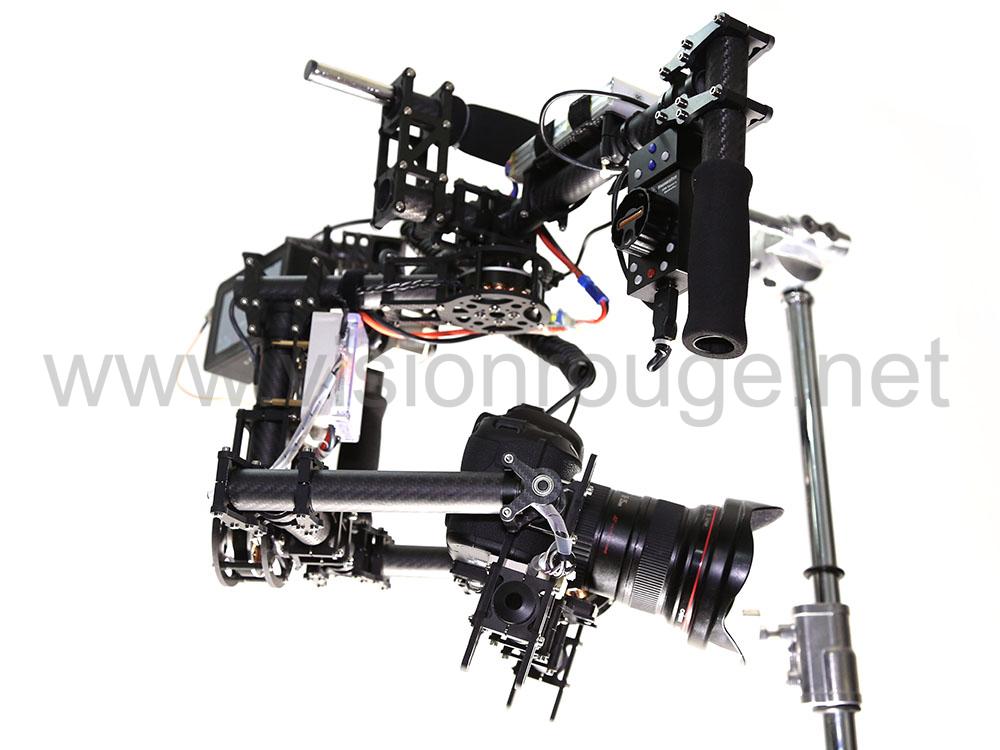Electronic-SteadyCam 2.0
In House Electronic-SteadyCam 2.0
Since flying object are in the sky with video camera, the engineer have tried to make the footage less shaky by adding gyroscope and motors to compensate the tilt and roll. With time, technology shift to faster motor and better gyroscope, It took not so much time to build bigger gimbals for bigger camera.
Turn out that any hand held system may benefice from this technology and the development from a single engineer in Russia finally took over everything we knew.
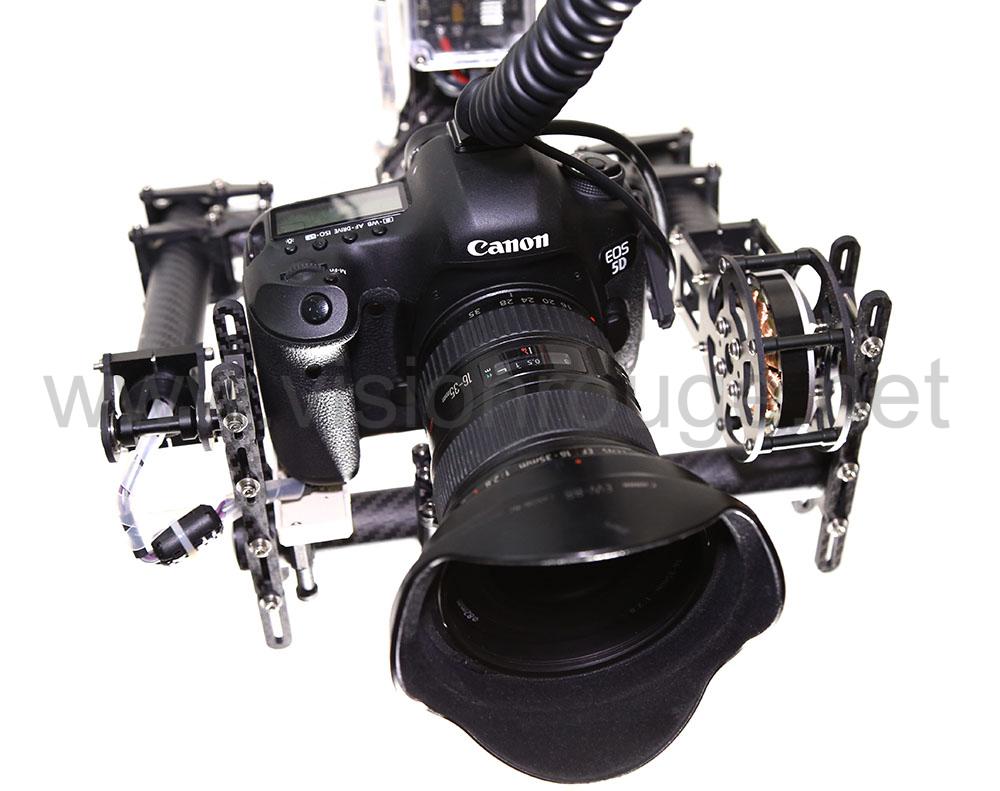
Alexmos developed a simple board, based on Arduino processor, including anything you need to balance with specific motors, the brushless one you could found anywhere.
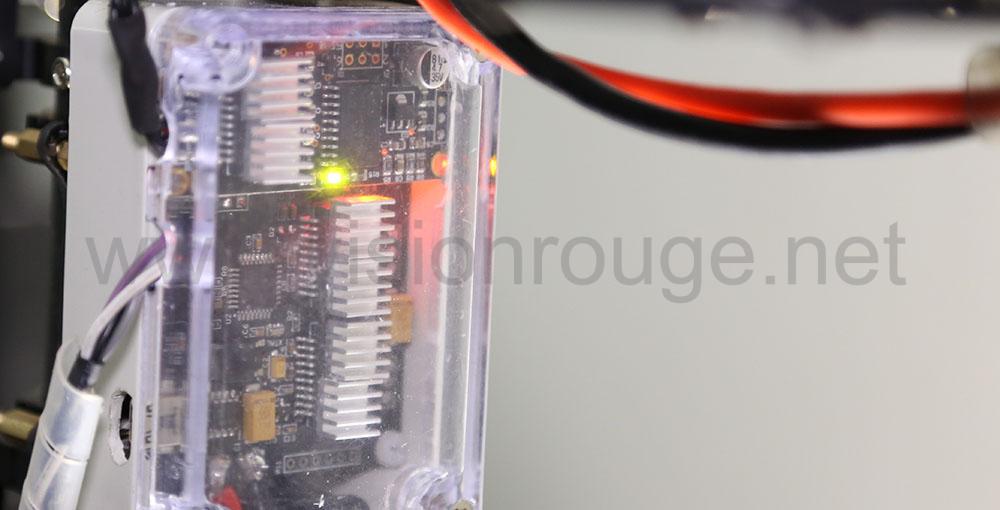
At first, it was necessary to remove the existing wiring in the motor to make this work, but now, you can find anywhere the “gimbals brushless motor” already with the right wiring. 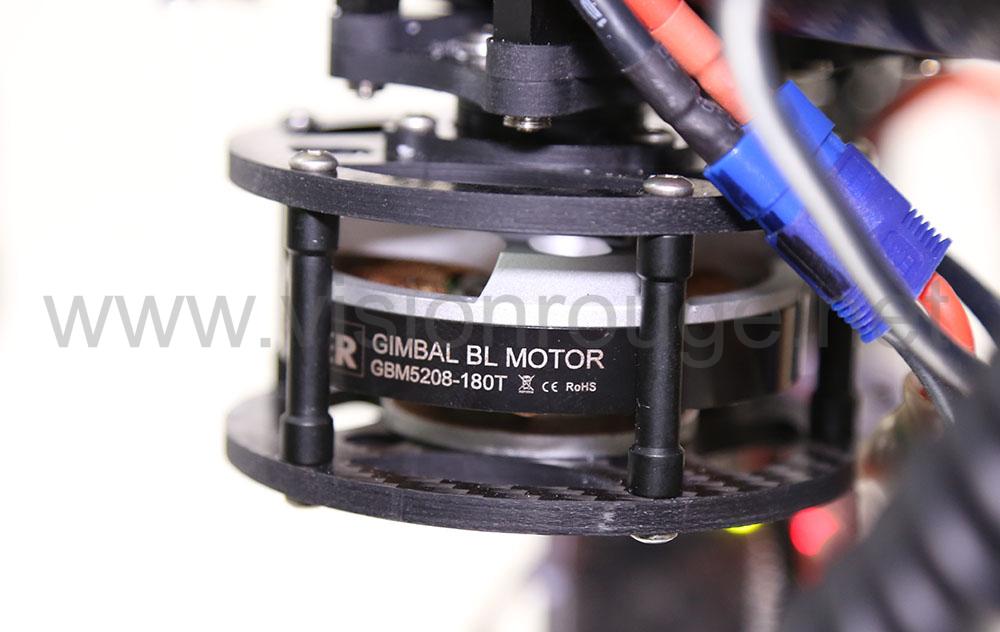
Next step was to adapt the simple fiber carbon support to be able to hold it by hand. One first commercial company ; Freefly systems broadcast his own product, the Movi in 2012 and a lot of copies are all over the web, with more or less function and success now.
As I like challenges and already confident with Arduino product (all our time lapse boxes are Arduino processed) I decided to build my own and let my customer enjoy it for a way cheaper price.
I already had the board included on the Dji Phantom 3.0 design and the only part missing was the 3rd axis control as well as the frame. My first frame was perfect to hold a camera until GH2, but the main flaw in the design was a direct support by the motor for each axis. As motor use magnet, you can see a small shake at each pole turning. Not great for larger camera. The Panasonic camera is a great tools but not enough to reach most of the demand from my customer, alias, the Canon 5D series.
To make sure I have a great tools to fit most of the production, my target was a Canon 5D body with a 16-35L lens as the lens don’t get extended when you change the focal. A very hard thing to do at first is almost a perfect balance of the camera before any electricity is applied, If you go for different lens, all this balancing process need to be redone which take a long time. By targeting such lens, I have a constant weight balance during any chosen focal and this range is quite the most useful one for a SteadyCam job. Now, that this lens is able to be used, It’s possible to use smaller one as the Canon 24mm IS or Canon 28 L IS with almost nothing to adjust.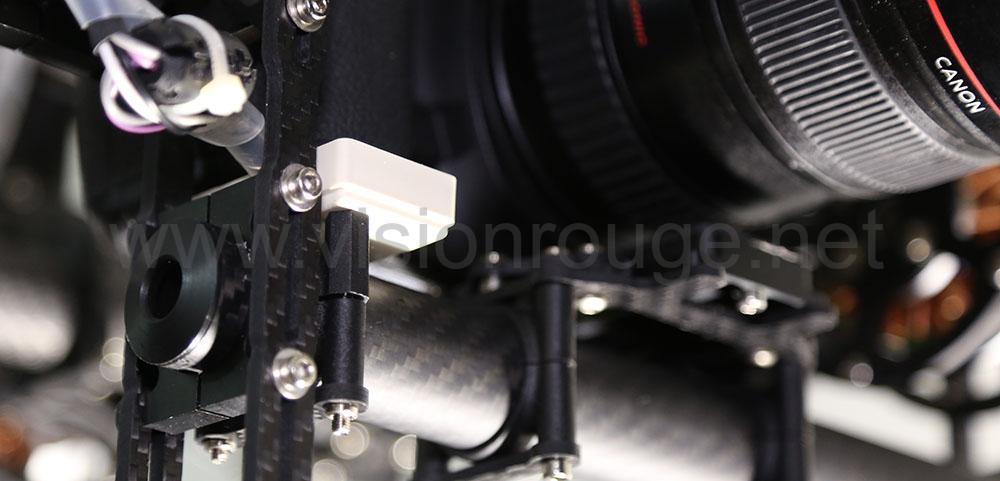
Another challenge was to be able to control most of the camera function without the need of a second person touching the camera when the operator will hold the E-SteadyCam. I found and tested a very nice USB controller which do exactly the job and can be put on one handle to keep focusing during moving. it still crashing sometime, but a simple on-off switch reset it .
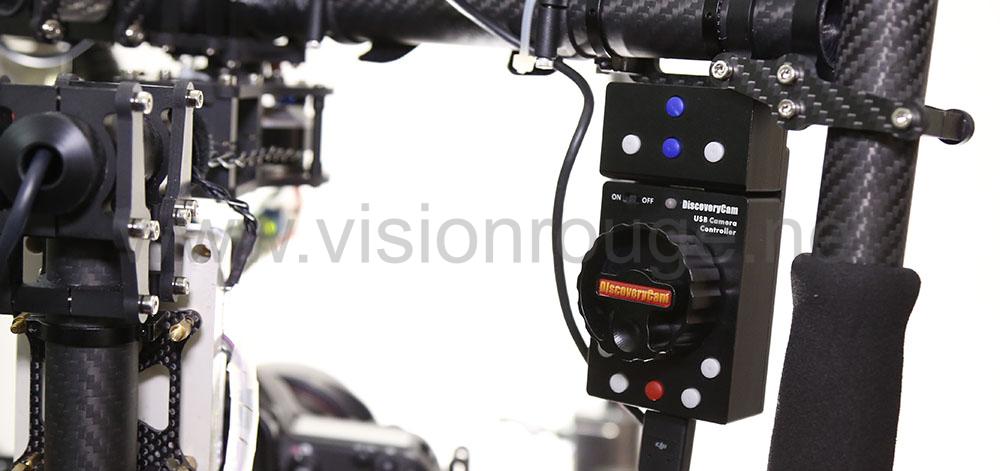
Last important item was the preview screen as the one from the camera will be cover by the frame most of the time. The Samurai Blade with external HDMI converter fit perfectly both function of preview and even recording if needed on SSD Hard drive.
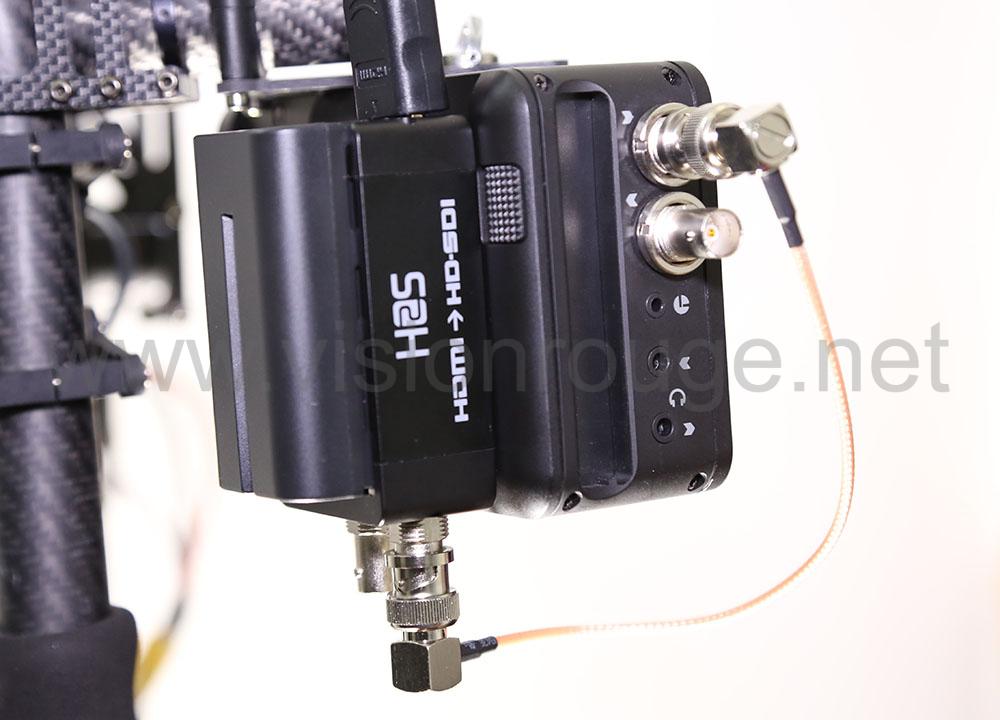
It allow you to check your signal and can add focus assist, histogram and framing guide. It’s also very light. The screen display a large red border to make sure you are recording where the small 5D red dot may be not that easy to found on a crowded info screen.
It’s also an amazing tools to review your footage in front of the client with a touch screen allowing you to control your playback in an instant in a larger screen.
All together it weighs only 5 KG, including camera and lens, and the battery is able to power it for about 2 hours. A lot of tests has been made to ensure continuous and smooth steady movement. A small joystick on your left hand allow you to keep control of the pan and tilt axis.
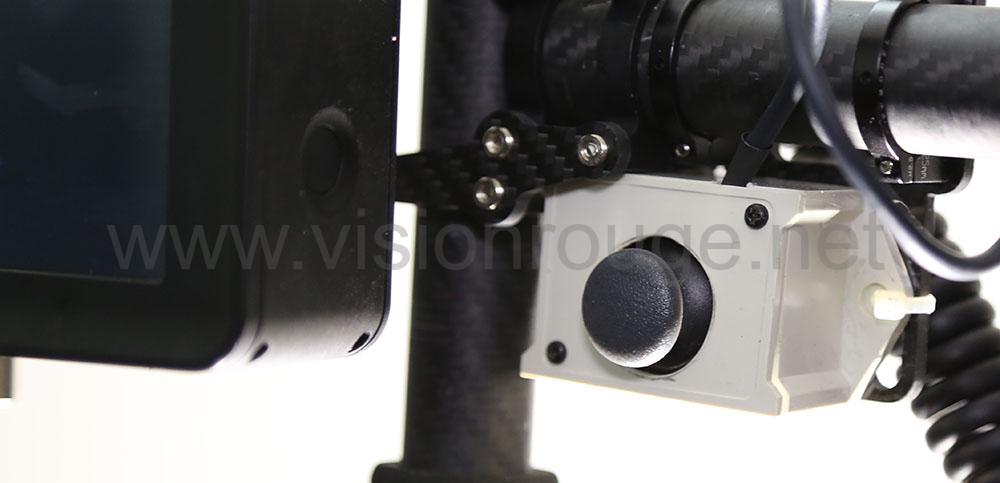
Right now, this small joystick also act as a remote for choosing 3 different setup in the controller and give you better choice of stabilization depending of the job. By pressing it 1 to 3 time, you have access to 3 memories programmed as follow.
– Dolly mode: The camera stay in the same axis whatever you frame is. This is perfect to simulate a dolly shot as the camera angle follow one unique direction, you can choose this axis with the joystick, but as soon as you release it, it’s locked and will keep the lens pointing to the same direction whatever happen.
–Follow mode Pan only: Same a precedent, but, if you pan slowly, le gimbal will let you follow your body in the pan axis only. The joystick still help pointing or follow you subject, but this is a natural way of following one moving person. The tilt and roll motor are kept the same
–Follow mode Pan, Tilt and roll. The most complex mode where pan, tilt and roll motors are following slow motion of your body and shaky fast one are covered by the electronic. This is useful to follow someone down the stairs for example. The joy is still active to position it easier but only for pan tilt as roll is not controllable. A simple long press on the joystick will reset it in case you found it hard balance it.
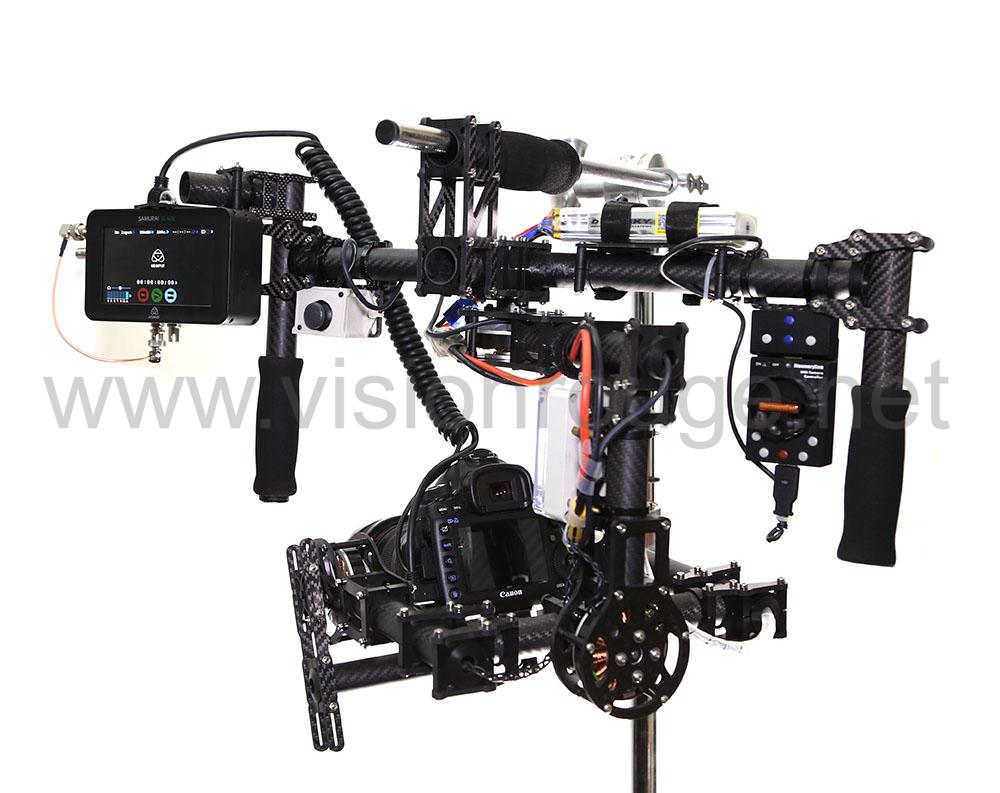
Real use.
After one full test during some b-roll shooting at a client location, I found this amazing and only the weight make me stop using it. It fit many situation as simple as just a very slow pan you should do with a tripod, but without the setup time. The motor keep the pan speed at a very slow continuous speed and controller hold it on the desired tilt axis. Of course all steady cam movement are now possible, even very complex one when you should have the camera very close to the floor or jumping on a top of compartment in an office situation.
This toys will really change the way I do shooting and save a lot of setup time. No more tripod in many situation, no more shoulder mounted rig if I need to move fast from place to place, no more dolly for sure.
Don’t be fooled, it still heavy and I don’t advise you to use it for interview except if you have a way to have some help on holding it. Maybe a vest may be the way, maybe a simple mono-pod may do.
The perfect setup for a very light fast and go shooting will be the E-SteadyCam with the 16-35L, Another shoulder rig with 5DIII and 24-105 IS for close up and finally a 70-200 Lens for the interview as well as a tripod. Few LED light on batteries and we are good to go almost any situation.
One downside is the fact that the motors are quite apparent, so it can’t be used even with a little rain and also dust is quite to avoid, especially the welding metal dust in an industrial environment. I’m looking now to get the motor covered in a next episode.
The next step will be to increase the torque of the motors and size to be sure it can balance a C300 or Red camera. Also, a wireless pan tilt remote can be added very easy, but you will also need a wireless transmitter on the rig.
A right case may also be available soon to protect it all.

